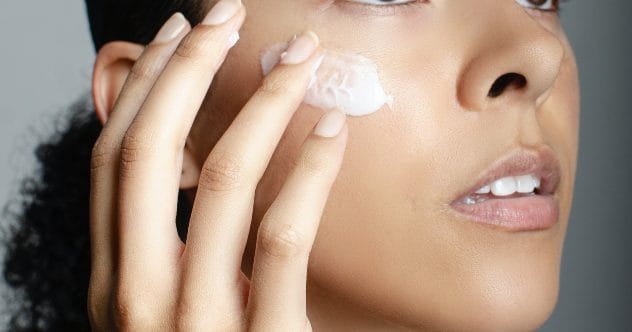Aside from dating apps, you probably don’t expect to stumble upon genitalia in everyday products. Yet, it seems to find its way into our menus, medicine cabinets, and even cosmetic bags.
You’ve likely heard about some cultures incorporating animal genitalia in culinary or medicinal practices. While not common and often illegal, you might be surprised that some items involve human sources. Human cells can be cultured to research and produce medical treatments and cosmetic products. The use of foreskin-derived cells is particularly controversial due to ethical and religious concerns but remains legal in many countries with strict regulations.
Buckle up as we explore ten unexpected things made from genitalia!
Homeopathic Kidney Medicine
In Beijing, you can find dog testicles on a stick sold by street vendors, believed to boost kidney function.
Traditional Chinese medicine has a long history of using dried dog testes and penises to treat kidney disease. The practice is based on the belief that the essence of the dog’s reproductive system can transfer to the patient, enhancing kidney health and vitality. According to a study, dried dog testis and penis are believed to tonify the kidneys.
Why dog testes and penises?
They are believed to be rich in Qi, or life force energy, helping to restore balance. Dogs are also thought to have a strong connection to the kidney meridian, crucial for regulating water and electrolyte balance. Before trying any new treatment, it’s always wise to consult a healthcare professional.
Rocky Mountain Oysters
Ready for a plate of Rocky Mountain oysters? These are deep-fried bull testicles. Yes, you read that right!
They can also be made from sheep testicles, breaded and fried. This dish is popular in Western states like Colorado, Texas, and Wyoming.
If you can get past the shock, some say they taste like chicken, calamari, or clams. Preparation is key. Though it takes a certain type of person to order bull testicles alongside their burger, we’re not here to judge! When in the Rockies, right?
Yak Penis
“Dragon in the Flame of Desire” sounds like a romance novel, but it’s actually a dish made from yak penis with a hefty price tag.
In traditional Chinese medicine, yak penis is believed to have aphrodisiac properties, increasing male potency and fertility. The name suggests it ignites passion within the consumer, like a mythical dragon.
This remedy aligns with traditional Chinese medicine, which emphasizes balancing the body’s energies, or “chi.” Consuming yak penis is thought to balance yin and yang energies, improving sexual health. However, little scientific evidence supports these benefits. While anecdotal evidence exists, no scientific journal confirms that yak penis improves sexual health.
Tiger Penis Soup
Tiger penis soup supposedly originated in ancient China, used for centuries to treat impotence and sexual dysfunction. The belief was that consuming the penis of a powerful animal like a tiger could bring similar benefits.
However, there is no scientific evidence to support these claims, and tiger penis soup is considered a placebo at best. The practice is also harmful, contributing to the decline of tiger populations.
Consuming tiger penis soup is not only controversial but illegal due to the endangered status of tigers. So, let’s leave those tigers alone.
Skin Grafts
Have you heard of treating burn victims using fibroblast cells from infant foreskin?
Yes, infant foreskin.
These cells have shown remarkable healing properties when used in skin grafts for burn victims.
Fibroblast cells produce collagen, essential for wound healing. Doctors can use these cells to create more effective skin grafts, repairing damaged tissue and promoting healing.
Why infant foreskin? The cells are more potent and effective at producing collagen than adult skin. Infant skin is still developing and has a greater capacity for healing.
The use of baby foreskin in medical treatments is controversial. However, the cells are obtained from consenting parents who chose circumcision. Treatments with these cells significantly benefit burn victims, helping them heal faster with fewer complications.
SkinMedica TNS Recovery Complex
Using human foreskin cells to help burn victims seems noble, but what about using it in everyday cosmetics?
SkinMedica’s TNS Recovery Complex contains a growth complex derived from human foreskin cells. Before you react, there’s a reason.
Foreskin cells contain growth factors believed to promote skin rejuvenation and repair. These factors stimulate collagen production, reduce fine lines and wrinkles, and improve skin texture.
While some evidence suggests growth factors improve skin health, there is no conclusive proof that foreskin cells in skincare are effective. The use of human foreskin cells raises ethical concerns, with some groups objecting to using human tissue in this way.
Vavelta
This treatment uses fibroblast cells from baby foreskin to rejuvenate skin and reduce wrinkles, injecting them directly into the skin.
By injecting fibroblast cells derived from human foreskin, the cells stimulate collagen and protein production, leading to a more youthful appearance. Move over Botox!
The cells are obtained through tissue culture, grown in a lab, eliminating the risk of infection or disease transmission.
As with any medical treatment, Vavelta is not a cure-all and may not suit everyone. Consult a healthcare professional before undergoing this treatment. While unconventional, Vavelta is one example of innovative treatments available.
BioEffect EGF Serum
This serum contains a plant-based version of epidermal growth factor (EGF), originally found in human foreskin cells. EGF is a powerful regenerative ingredient, stimulating cell growth and repair.
Modern technology allows scientists to produce a plant-based EGF, offering the same benefits without ethical concerns. BioEffect EGF Serum uses this ingredient to improve skin texture, reduce wrinkles, and increase hydration.
When applied to the skin, EGF stimulates the body’s natural repair processes, leading to healthier, youthful-looking skin.
Vulva Vaginal Scent Perfume
Forget pumpkin spice. One perfume company believes every girl wants to smell like a vagina.
VULVA Original claims to capture the intimate scent of femininity, combining vaginal scent, body odor, and perfume notes. Nothing says alluring like that, right?
It’s marketed as an aphrodisiac for the new generation, suggesting that smelling like a vulva is key to sexual desire and well-being.
The company states it’s subject to strict international controls and made with help from female volunteers.
Vag Yogurt
Making homemade yogurt is one thing, but adding vaginal secretions?
According to Stay at Home Mum, you can literally make yogurt from vaginal secretions. Cecilia Westbrook, an MD/Ph.D. student from Wisconsin, swears by this unconventional method.
The bacteria in the vagina are similar to those used to ferment yogurt. But that doesn’t mean it belongs in your yogurt. Using vaginal secretions to make yogurt is not scientifically proven and has potential health risks, introducing harmful bacteria or infections.
If you’re not comfortable with that, there are plenty of ways to get probiotic benefits from store-bought yogurt or probiotic supplements!
From medicine to cosmetics, genitalia have found surprising uses. While some applications raise ethical questions and lack scientific backing, others offer potential benefits. Whether it’s consuming animal parts or using human cells, these practices present unique and sometimes controversial approaches to health and beauty.
What do you think about these unconventional uses of genitalia? Leave your comment below!










